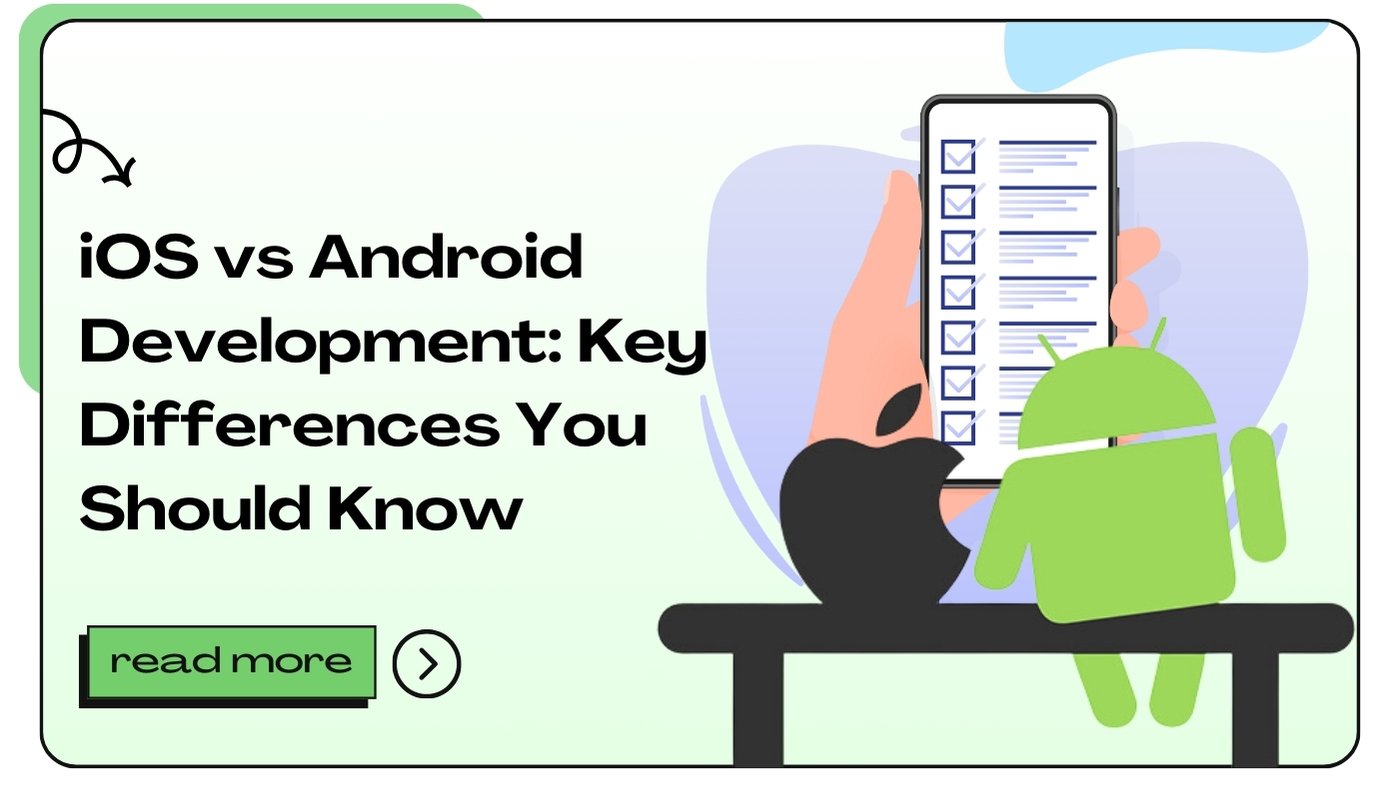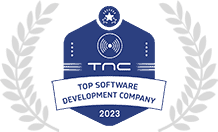Developers often debate between iOS and Android app development. Each platform has distinct features, requirements, and challenges that impact how apps are built, tested, and maintained. Understanding these differences helps you make informed decisions, whether you’re a developer or a business owner looking to build a mobile application. In this article, we will explore the key differences you should know about iOS and Android development, using the latest industry insights and best practices.
Development Ecosystem
Both iOS and Android have unique development ecosystems. iOS apps are developed using Apple’s integrated tools and frameworks, while Android development relies on tools supported by Google. Developers must understand these ecosystems to optimize their workflow and produce high-quality applications.
iOS Development Tools:
iOS developers use Xcode as their primary integrated development environment (IDE). Xcode includes a suite of tools for code editing, debugging, and interface design. It’s tightly integrated with Apple’s SDKs (Software Development Kits) and APIs, making it easier to create applications optimized for the iOS platform. Additionally, Swift is the primary programming language for iOS, replacing Objective-C. Swift offers powerful modern language features, such as memory safety and type inference, which reduce development errors.
Android Development Tools:
On the other hand, Android apps are primarily developed in Android Studio, an IDE based on IntelliJ IDEA. Android Studio supports Java, Kotlin, and C++ for coding. Google’s Kotlin, in particular, has become the favored language for Android development due to its concise syntax, null safety features, and enhanced readability. Android Studio provides robust tools for performance profiling, debugging, and designing user interfaces, making it an essential part of the Android development process.
| Development Tool | iOS | Android |
|---|---|---|
| IDE | Xcode | Android Studio |
| Primary Language | Swift | Kotlin/Java |
| Supported OS | macOS only | macOS, Windows, Linux |
User Interface (UI) Design Guidelines
The user experience (UX) and user interface (UI) design guidelines for iOS and Android differ significantly. Both platforms emphasize user-centric designs, but the guidelines vary in terms of aesthetics and usability.
iOS UI Design:
iOS apps follow Apple’s Human Interface Guidelines (HIG), which prioritize simplicity, clarity, and depth. Apple’s design philosophy focuses on minimalism, allowing content to stand out. The use of flat design, with subtle gradients and shadows, is common in iOS apps. Navigational elements like tab bars and navigation bars are typically placed at the bottom and top of the screen, respectively, following intuitive patterns established by Apple.
Android UI Design:
Android apps adhere to Google’s Material Design guidelines, which emphasize a more vibrant, layered approach to design. Material Design uses bold colors, responsive animations, and the concept of “cards” to structure UI elements. Android UI typically features a bottom navigation bar or a hamburger menu for navigation. Additionally, Android allows more flexibility in terms of customization, both for developers and users, leading to more diverse design implementations.
| Design Guideline | iOS | Android |
|---|---|---|
| Primary Focus | Minimalism | Bold, dynamic design |
| Navigation | Bottom navigation bars, tab bars | Bottom navigation, hamburger menu |
| Flexibility | Limited customization | More customization options |
Fragmentation and Device Compatibility
Device Fragmentation in Android:
One of the biggest challenges in Android development is device fragmentation. Android powers a wide range of devices from different manufacturers, each with varying screen sizes, resolutions, and hardware capabilities. Developers must ensure that their apps work seamlessly across this spectrum. Additionally, Android updates are released to manufacturers and carriers, meaning not all devices run the latest version of Android. As a result, developers often have to support multiple OS versions.
Device Uniformity in iOS:
iOS development benefits from a more controlled environment. Apple releases its software and hardware updates simultaneously across devices, meaning iOS developers only need to optimize apps for a smaller number of devices. While this uniformity simplifies development and testing, Apple’s strict control also limits flexibility, as developers must comply with the latest iOS updates to maintain compatibility.
| Factor | iOS | Android |
|---|---|---|
| Device Fragmentation | Low | High |
| OS Versions to Support | Fewer | Multiple |
| Testing Requirements | Simplified | Complex |
Development Cost and Time
Cost of iOS Development:
iOS development can be more expensive, primarily due to the exclusive need for macOS and Apple hardware. Developers must use a Mac computer to develop and publish iOS apps. Additionally, the App Store review process is stricter, which may extend the time it takes for an app to be approved and released.
Cost of Android Development:
Android development tends to be more accessible since Android Studio is available on multiple operating systems (macOS, Windows, Linux). Android’s open-source nature also allows for greater flexibility. However, the diversity of devices requires more extensive testing, which can increase costs and development time.
| Factor | iOS | Android |
|---|---|---|
| Development Hardware Cost | Higher (Mac required) | Lower (Mac, Windows, Linux supported) |
| App Review Time | Longer | Shorter |
| Testing Complexity | Lower | Higher |
Monetization Strategies
Monetization strategies also differ between iOS and Android platforms, driven by the behavior and demographics of their user bases.
iOS Monetization:
iOS users tend to spend more on apps, making the App Store a lucrative marketplace for developers who use paid apps, in-app purchases, and subscriptions as their main monetization strategies. iOS users are generally more inclined to make purchases within apps, leading to higher revenue per user compared to Android.
Android Monetization:
Android has a larger global market share, but its users are less likely to pay for apps or make in-app purchases. Therefore, Android developers often rely on ad-supported apps or freemium models to generate revenue. Android’s vast user base can still offer substantial profits, but the per-user revenue tends to be lower than on iOS.
| Factor | iOS | Android |
|---|---|---|
| User Spend | Higher | Lower |
| Popular Monetization Models | Paid apps, in-app purchases, subscriptions | Freemium, ad-supported apps |
App Store vs Google Play Store: Publishing Differences
App Store (iOS):
Apple’s App Store has a stricter and more controlled approval process compared to Google Play. Each app is manually reviewed by Apple’s team to ensure it meets their quality and security standards. While this review process ensures a higher level of quality control, it can also delay app launches.
Google Play Store (Android):
Google Play Store has a more lenient review process. While Google does scan apps for malicious content, the overall approval process is quicker. This makes it easier for developers to publish updates or launch new apps quickly. However, the downside is that the Play Store can be more prone to lower-quality apps due to its less stringent review process.
| Factor | iOS | Android |
|---|---|---|
| App Review Time | Longer | Shorter |
| Quality Control | Strict | Less strict |
| Security | High | Moderate |
Security Considerations
iOS Security:
Apple’s closed ecosystem provides an additional layer of security for iOS apps. The strict App Store review process and mandatory app sandboxing reduce the risk of malware or data breaches. Apple also requires developers to adhere to specific privacy standards, like obtaining explicit user permission for data access.
Android Security:
Android, being an open-source platform, is more vulnerable to security issues. Although Google Play Protect scans for harmful apps, the relatively lax app submission process means that malicious apps can still make their way onto the store. Additionally, Android apps can be sideloaded (installed from third-party sources), which increases the potential for security risks.
| Factor | iOS | Android |
|---|---|---|
| Ecosystem Control | Closed | Open |
| App Store Security | High | Moderate |
| Risk of Malware | Lower | Higher |
Market Share and User Demographics
iOS User Base:
iOS dominates in markets like North America, Western Europe, and Australia. iOS users tend to be more affluent and are often more engaged with premium apps, contributing to higher revenues for developers. iPhone users also show strong brand loyalty, which can lead to more consistent app usage and retention rates.
Android User Base:
Android’s market share is much larger globally, particularly in regions like Asia, Africa, and South America. Android’s open-source nature allows manufacturers to produce a variety of devices at different price points, making it more accessible to a broader audience. However, this also leads to greater fragmentation, as discussed earlier.
| Factor | iOS | Android |
|---|---|---|
| Market Share | Smaller (especially in high-income regions) | Larger (global) |
| User Affluence | Higher | Moderate to lower |
| Brand Loyalty | High | Moderate |
FAQs about iOS vs Android Development
- Which platform is easier to develop for, iOS or Android?
iOS is often considered easier due to fewer devices and OS versions, while Android requires more testing for various devices. - Is it cheaper to develop an Android app compared to iOS?
Generally, yes. Android development allows for more affordable tools and hardware options. - Which programming languages are used for iOS development?
Swift and Objective-C are the primary languages for iOS app development. - Can I develop Android apps on a Mac?
Yes, Android Studio is compatible with macOS, Windows, and Linux. - Which platform has a better revenue model?
iOS users typically spend more on apps, leading to higher revenue per user compared to Android. - Do I need to test my Android app on multiple devices?
Yes, due to Android’s device fragmentation, testing on different screen sizes and hardware is necessary. - Which platform offers better security for apps?
iOS is considered more secure due to its closed ecosystem and strict App Store review process. - Is Swift easier to learn than Java or Kotlin?
Swift is often praised for its simplicity and modern syntax, making it easier for beginners. - Can I publish my app on both iOS and Android simultaneously?
Yes, with cross-platform development frameworks like Flutter or React Native, you can target both platforms. - Does Android have more users than iOS?
Globally, Android has a larger user base, but iOS dominates in high-income markets like the U.S. and Europe. - Which platform should I target first for my app?
It depends on your target audience. If your users are in North America or Western Europe, iOS might be the better option. - How long does it take to get an app approved on the App Store?
The App Store review process can take a few days to a week, depending on the app’s complexity. - Can Android apps be sideloaded?
Yes, Android allows apps to be installed from third-party sources, although this can increase security risks. - Do I need a Mac to develop iOS apps?
Yes, you need a macOS device to run Xcode, the IDE for iOS development. - Which platform has more customization options?
Android offers more customization options for both developers and users. - What’s the biggest challenge in Android development?
Device fragmentation is the biggest challenge, requiring extensive testing on various hardware. - Why are iOS apps more expensive to develop?
iOS development requires Mac hardware and adherence to Apple’s stricter guidelines, increasing costs. - Are there cross-platform tools to develop for both iOS and Android?
Yes, popular tools include Flutter, React Native, and Xamarin. - Do iOS users spend more on apps than Android users?
Yes, iOS users typically have higher purchasing power and spend more on apps. - Which platform offers better design flexibility?
Android offers more design flexibility due to its open-source nature and wider variety of devices.
- How to Join Two Strings in Flutter - January 2, 2025
- How to Add Icon in Flutter - January 2, 2025
- How to do Facebook Login in Flutter - January 2, 2025




















